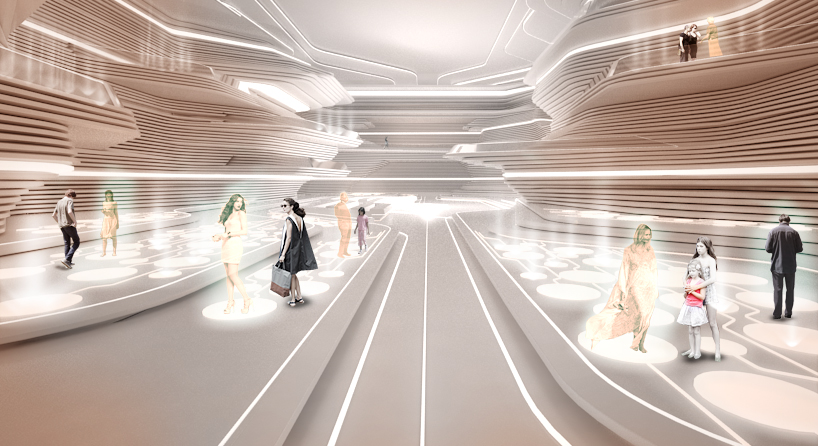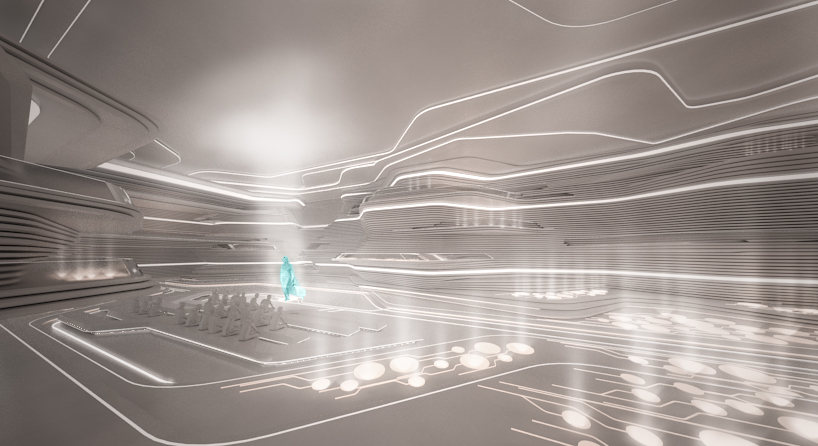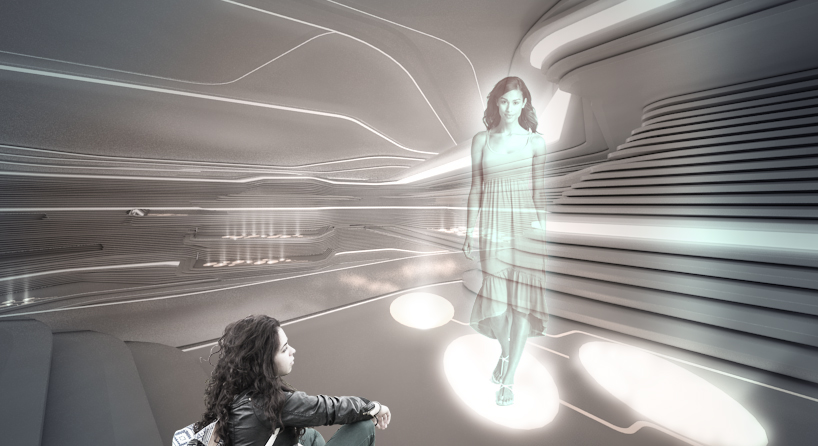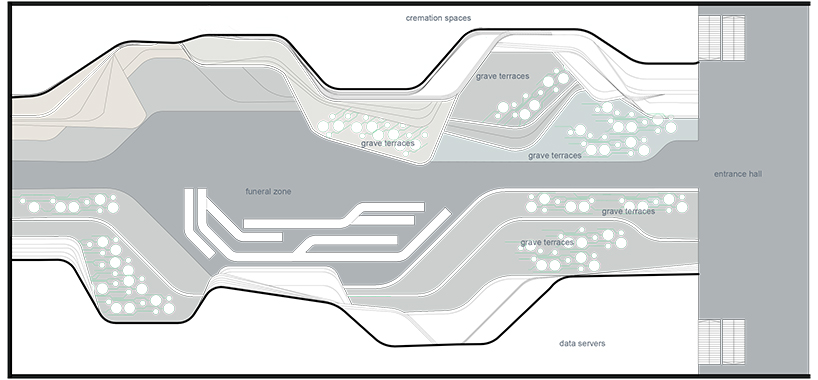
Digital Cemetary by Zeynep Aksoz from turkey
designer's own words:
The concept of death is only relevant for the ones who stay behind. When we stop to exist we can't feel anymore. Only our absence remains as a sad feeling for our relatives. The feeling of absence comes from the lack of exchange. The proof of our existence is the exchange with others. When the exchange stops we stop to exist. The impossibility of the communication after death reasons to sadness. But what if the interchange would continue even we do stop existing.
We are one of the first generations, who create an archive of their complete lives on the internet. Every search we make, every email we get or every picture we upload provides information for a digital identity that we unconciously create in the digital environment. This digital profiles evolve with us within internet. But unlike our real selves, our digital selves continue to exist even we stop existing. What if these digital personalities could continue evolve theirselves, even we stop to provide the information for them? The machine learning systems are allready starting to calculate our future actions on the internet depending on our former actions. Which means after our death we actually still could continue existing and evolving in the digital space. This also could support possibilities of further communication to our relatives.
Depending on the idea of communication exchange after death, the project generates a digital cemetary. The graves in the digital cemetary store digital identities in addition to the remains of the dead person. A visit to the grave not only remains as a memorial and rememberance of the loved ones, it also allows communication with the digital profiles of the relatives. With this possibility the project questions the reality of the digital information and if it can provide a replacement to our loss.
In the application of this idea into architectural design I was mainly researching the overlaps between digital and spiritual space and how could these be created. The spatial concept derives from the idea of entering the grave to communicate our loved ones. The underground space abstracts itself from the real world. It detaches the relation to outside. The gravestone in its classical image does not exist anymore. It evolves into a digital screen, where the holograms can be projected. This new kind of gravestones also create a garden of lightning.
The digital cemetary also contains spaces for cremation and a main zone for the funeral rituals, where the dead person also participate in his/her own funeral as a hologram. The cemetary merges the classical idea of the cemetary with digital information. The inclusion of information technology into the subject of death changes the whole idea of mourning. New rituals of rememberance could evolve in a digital cemetary.
Main Hall of the cemetary from entrance situation
The time of the funeral ritual
private spaces
plan